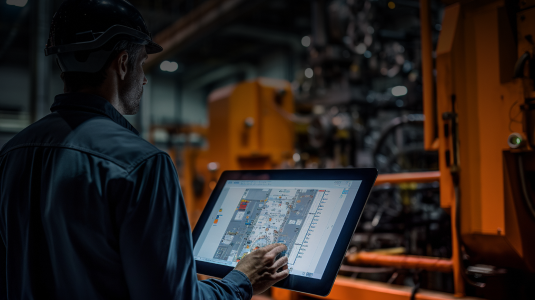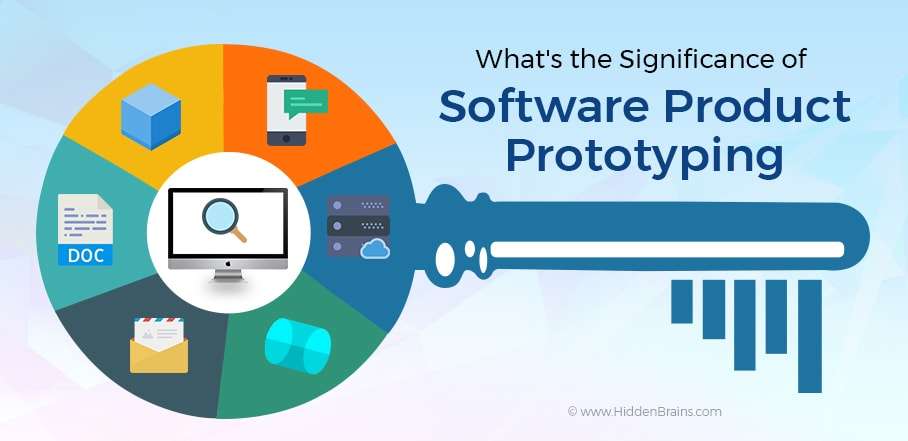Table of Contents
One of the important stages of software development life cycle is ‘prototyping’. This is an essential early step in software product development that defines a three-dimensional version of your idea. Software product prototyping development inspires and nurtures your vision in the first place. It gives designers and developers an opportunity to tap into creativity and make way for the development of an innovative software product.
Majority of the popular and most useful products existing in the market have reported to invest good amount of time and effort in prototyping stage. Let’s understand the journey of transforming your idea into something tangible with product prototyping process:
Understanding Software Prototypes and the Purpose of Prototyping
To explain in simple words, prototype is a working model of software with limited functionalities. It is the concrete representation of an idea of prospective software product. In other words, prototype is a tangible artifact, not merely an abstract description that requires interpretation. It allows clients to evaluate developer proposals and even try them out before actual implementation.
The core purpose of software product prototyping development is to bring designer, developer and client on the same page by allowing one-to-one interaction with the prototype. Prototyping is a significant part of early stage development process because of following unique characteristics:
- Prototyping supports creativity by helping in realizing the projected idea or vision
- Prototypes help developers to capture the core essence of ideas and try to implement it in real world
- Prototyping is the only stage that facilitates the exploration of a design space and uncovers relevant information about users and their work practices.
- Prototypes encourage communication between designers, software developers and clients to discuss options, opportunities and possibilities through effective interaction with each other.
- Prototype helps in identifying loopholes or mistakes at early stages of development. It allows in checking traditional usability scenarios and collecting client feedback on whether the prototype resonates with his expectations of the envisioned product.
Prototypes can be analyzed and understood with respect to following pointers:
Presentation: This dimension describes the way prototype is created, i.e. using handmade sketches or computer generated clickable prototypes.
Interaction: How interactive or engaging you want the prototype to be developed? Some clients may need just basic prototype that illustrates basic functionalities while others may need detailed version that delivers look and feel of final product.
Accuracy: This dimension specifies the level of precision to which prototype is to be evaluated. Product prototype may be either roughly developed or highly polished as per the requirement.
Evolution: Prototypes could be either rapid or iterative in nature. Rapid ones are created with an intention to throw away after the initial use while iterative ones are worked upon continuously to improve the product and enhance it further.
Stepwise Approach to Software Product Prototype
Following are the 4 steps that outline the entire process of software product prototyping:
Identification of Requirements: This is the first stage of prototyping process where all the information related to the envisioned product is collected. At this stage, it is not required to dig in the intricacies of performance or look of the product.
Development of Low-Fidelity Prototypes: This stage marks the beginning of development of prototypes that matches the requirements of clients and technical feasibility. The features and functionalities featured in this prototype my not exactly resemble the real product, but it is the rough representation that gives an estimation of overall look and feel.
Reviewing the Prototype: The developed prototype is reviewed by different stakeholders of the project. Detailed feedback is collected from them to make further enhancements in the product under development.
Revision and Enhancement of Prototype: Missing elements of the prototype are worked upon to prepare high-fidelity prototypes. At this stage, other constraints such as time, budget and technical feasibility of suggested improvements are gauged to decide whether to evolve the prototype at this stage or consider it for later improvements.
Dimensions of Prototypes: Horizontal and Vertical
Two different dimensions of prototypes are as mentioned below:
Horizontal Prototype
This is the common term associated with user interface prototype. This dimension prototype provides an expanded and much broader view of the projected software product. The main aim of building this prototype is to focus on user interaction level rather than low-level system functionality.
Horizontal prototype is the best way to confirm interface requirements and system scope. This is the demonstration version of the system that gives all stakeholders a fair idea of how the product would function once it is completely developed. Horizontal prototypes also help in estimating overall development time, cost and effort to be needed for building final product.
Horizontal prototyping is most common among large software development teams where designers with different skill sets address different layers of the software architecture. It portrays a picture of the product from user’s perspective to overcome issues of consistency, usability and redundancy.
Vertical Prototype
This prototype is the complete and more detailed version of envisioned software product. Being a vertical prototype, this version digs deeper into complex requirements of the client to include all specifications and functionalities of product.
This prototype is useful for obtaining information on data volumes and system interface needs, for network sizing and performance engineering. IT demonstrates that the designer and developers can implement the full, working system, from the user interface layer to the underlying system layer. Vertical prototypes also help in checking the feasibility of a feature that is mentioned in horizontal, task-oriented or scenario-based prototype.
Types of Software Product Prototypes
Based on diverse requirements of the industry, there are 4 major types of software prototypes as mentioned below:
Rapid Prototyping: This is the most basic model of prototyping that showcases basic requirements to build the projected software product. This prototype is developed quite rapidly to understand the requirements and is immediately discarded when this is done.
Evolutionary Prototyping: This prototyping is created with a futuristic approach where all the well-understood requirements with minimal functionality are added in the beginning. This prototype is the foundation on which the entire system is built. Basic specifications and requirements are added in the prototype on top of which entire product is built.
Incremental Prototyping: In this type of prototyping, small functional prototypes are created independently and later merged together to build a complete software product.
Extreme Prototyping: This type is especially useful for developing web applications. Three phases of web development are static prototype (using HTML pages), programing fully functional simulated services and actual implementation of services.
Choosing Best-in-Class Enterprise Product Prototyping Development Services
Now that you have understood the significance of prototyping in the product development life cycle, you would realize how vital it is to choose the best source for procuring this service. Hidden Brains is a reliable enterprise product prototyping development services provider that designs and engineers software prototypes for inventors, entrepreneurs, startups, and large companies alike.










































